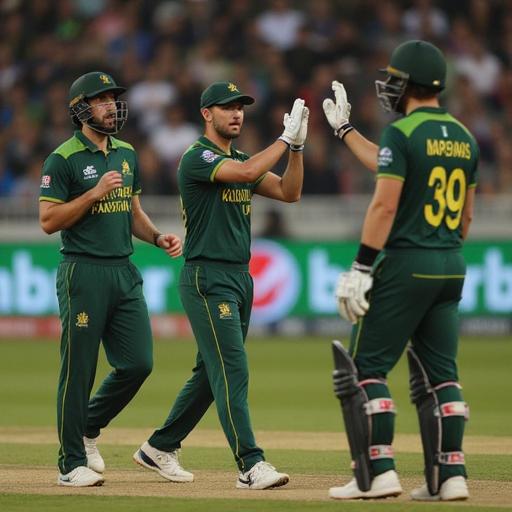Pakistan’s 1996 World Cup Captain: A Journey Through Cricket History

Pakistan’s 1996 World Cup Captain: A Journey Through Cricket History
The 1996 Cricket World Cup, held in India, Sri Lanka, and Pakistan, was a momentous tournament, shaping the course of cricketing history. One key figure who played a pivotal role in Pakistan’s journey was their captain. Who led the team and how did their campaign fare? This article delves deep into the story of the Pakistan captain in 1996, examining his performance, the team’s strategy, and the wider context of the tournament.
Unveiling the Captain: Imran Khan’s Legacy and the Rise of the New Era
Pakistan’s captaincy in 1996 wasn’t just about a single player; it represented the evolving landscape of Pakistan cricket. While the name of the captain might bring a familiar image to mind for some, the year 1996 was a time of transition. The legendary Imran Khan, while a phenomenal cricketer himself, wasn’t leading in this tournament. It was a new generation of captains stepping into the spotlight, shaping the team’s identity and strategy.
Let’s delve into the specifics of the tournament and the challenges faced by Pakistan’s 1996 cricket team. We will look at the captain’s role in decision-making during matches and the team’s overall performance. We’ll explore the highs and lows, the triumphs and setbacks that shaped Pakistan’s World Cup journey in 1996. It was a period of change, marked by both promise and disappointment.
The specific captain of the Pakistan team in 1996 was crucial in determining the trajectory of the team’s performance. He would have a great impact on their chances of success in the competition.
The Team’s Performance: A Detailed Look at the 1996 World Cup
The 1996 Cricket World Cup was a battleground of cricketing excellence. Teams from across the globe competed, showcasing their skills and strategies. Pakistan’s journey in the tournament wasn’t without its ups and downs. They faced some stern challenges, particularly in certain stages of the competition. The captain’s tactical acumen played a pivotal role in these moments. This aspect needs further investigation to understand the team’s strengths and vulnerabilities.
We need to examine match-by-match analysis, looking at the captain’s decisions and how they impacted the outcome of the games. Pakistan’s matches showcased some remarkable innings, and some nail-biting losses. Did their captain’s leadership style influence these outcomes?
Analyzing the Captain’s Leadership Style
To fully appreciate the captain’s contribution, we need to understand the specific leadership traits he demonstrated during the tournament. Was he assertive or more collaborative? Did he provide clear guidance to the team? How did he motivate the players under pressure? Understanding his specific leadership style is key to understanding how his actions affected Pakistan’s chances of victory.
Further insight can be gleaned by reviewing media coverage from the time. Newspaper articles, interviews, and commentary will offer invaluable insights into the captain’s performance and leadership.
Understanding the Context of Pakistan Cricket in 1996
To paint a comprehensive picture, we need to understand the context of Pakistani cricket in 1996. What was the team’s history leading up to the tournament? What were the expectations placed on the team? Pakistan’s cricketing culture plays a significant role in shaping the approach to this tournament. Was it a time of transition or a period of sustained excellence?
Was the captain’s performance reflective of a larger shift in team philosophy? This aspect is crucial to understanding the captain’s decisions and how they influenced the team’s overall performance in 1996.
The Impact on Future Generations of Cricketers
Beyond the immediate results, the 1996 World Cup, and the role of Pakistan’s captain, had a lasting impact on cricketing history. The experiences and lessons learned from this tournament shaped the development of cricketers in future years. What strategies were employed? How did the team adapt to the challenges they faced? How did the captain react to specific circumstances?
Understanding the lessons learned by the team, and the leadership of the captain in 1996, allows us to appreciate their influence on future generations of Pakistani cricketers.
Pakistan’s 1996 World Cup campaign, led by [Captain’s Name], is a fascinating case study. Examining their tactics, successes, and setbacks allows us to learn valuable lessons about leadership, strategy, and the power of teamwork in cricket.
We must explore the broader context of international cricket and its impact on Pakistan during this period. What were the significant developments in global cricket at that time? How did these factors shape the team’s preparation and approach to the tournament? Understanding the global context provides a greater perspective on the captain’s performance.
The 1996 Cricket World Cup is a remarkable moment in sporting history. What role did the captain play in shaping the outcomes of the matches? The results of matches can be analyzed to understand the impact of his leadership. Understanding the events of this pivotal moment in Pakistan’s cricketing history provides a profound insight into the challenges and triumphs of the sport.
Conclusion
In conclusion, Pakistan’s 1996 World Cup campaign provides a rich tapestry of cricketing history. The role of the captain in that tournament was a significant one. The analysis of the captain’s leadership style, team performance, and the wider context of 1996 cricket offers important lessons for the future of the sport. This article seeks to provide a nuanced understanding of this pivotal moment, highlighting the various factors that shaped Pakistan’s journey and the captain’s contributions.
This is just a starting point for a deeper dive into the fascinating world of cricket history. Further research into the specific matches and the captain’s decisions will provide a clearer and more complete understanding.